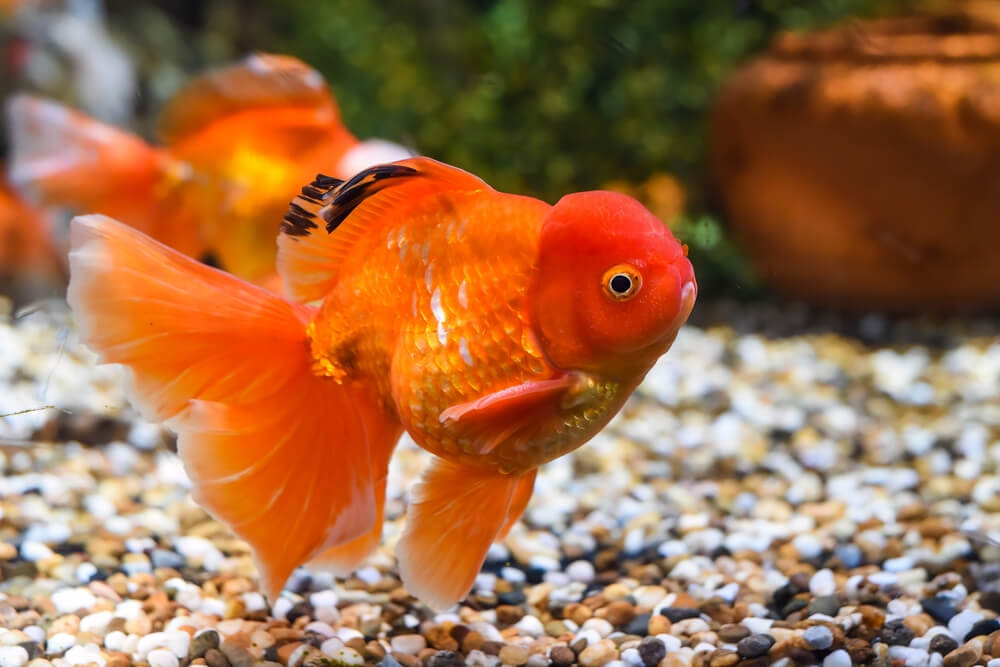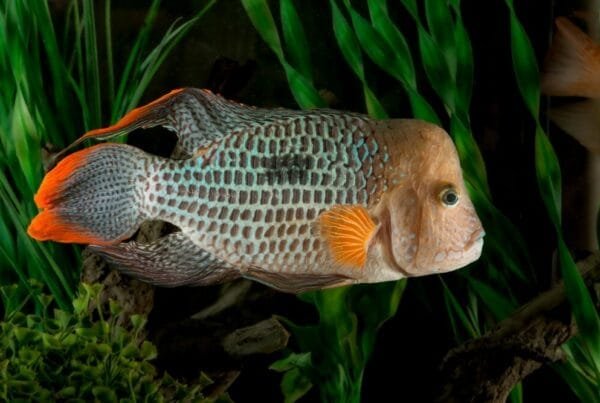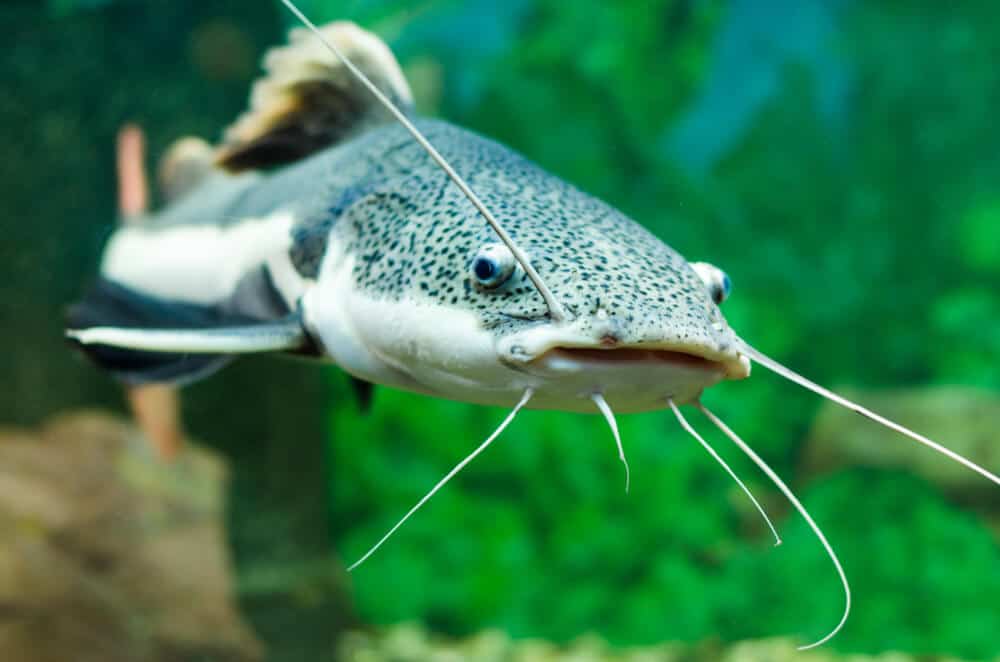You’re a proud new owner of a beautiful goldfish, but now you’re wondering how to properly care for it. Well, fret not! This article is here to guide you with practical tips and expert advice on keeping your goldfish healthy and happy. From setting up the right environment to feeding them a balanced diet, we’ll walk you through all the essential steps to ensure your golden aquatic companion thrives in its new home. So, let’s dive right in and learn how to give your goldfish the love and care it deserves.
Setting Up a Suitable Environment
Setting up a suitable environment is essential for the well-being and health of your goldfish. Here are some important factors to consider:
Choosing the right tank
When selecting a tank for your goldfish, it’s crucial to provide enough space for them to swim and grow. Goldfish can produce a lot of waste, so a larger tank with a minimum capacity of 20 gallons is recommended for one goldfish. If you plan to have multiple goldfish, you’ll need an even larger tank to accommodate their needs.
Providing adequate space
Goldfish require ample swimming space to thrive. Make sure to leave enough room in the tank for them to move around comfortably. Avoid overcrowding the tank, as it can lead to stress and health issues for the fish.
Selecting appropriate substrates
Choosing the right substrate is important for both the aesthetic appeal of the tank and the well-being of your goldfish. Opt for smooth gravel or sand as substrates, as rough materials can harm the delicate fins and scales of goldfish.
Adding a filtration system
A filtration system is vital for maintaining good water quality in your goldfish tank. It helps remove waste, excess food, and harmful toxins from the water, ensuring a healthy environment for your fish. Choose a filtration system that suits the size of your tank and follow the manufacturer’s guidelines for proper installation and maintenance.
Establishing optimal lighting
Goldfish generally thrive with moderate lighting conditions. Avoid direct sunlight, as it can cause excessive algae growth and temperature fluctuations in the tank. Instead, provide artificial lighting that mimics a natural day-night cycle, with around 10-12 hours of light per day.
Maintaining water temperature
Goldfish are able to tolerate a wide range of temperatures, but it’s important to maintain a stable and appropriate water temperature for their well-being. Most goldfish species prefer a temperature range between 65-75°F (18-24°C). Use a reliable aquarium heater or cooler to regulate the water temperature and prevent any drastic fluctuations.
Ensuring Proper Feeding
Proper feeding is crucial to support the health and vitality of your goldfish. Here are some important factors to consider:
Selecting a balanced diet
Goldfish have specific dietary needs and benefit from a well-rounded and balanced diet. Opt for high-quality goldfish pellets or flakes that contain essential nutrients and are specifically formulated for goldfish. Additionally, supplement their diet with occasional treats such as frozen or live foods like bloodworms or brine shrimp to provide variety and additional nutrients.
Feeding frequency
Goldfish have big appetites, but it’s important not to overfeed them. Feed your goldfish small amounts of food 2-3 times per day. It’s better to feed them smaller portions multiple times a day rather than a large meal once a day, as this helps prevent overeating and reduces the risk of digestive problems.
Controlling portion sizes
Pay attention to the portion sizes you offer to your goldfish. Overfeeding can lead to obesity and health issues. A good guideline is to provide an amount of food that your goldfish can consume within 2-3 minutes. If there is excess food in the tank after this time, it’s an indication that you’ve offered too much.
Preventing overfeeding
Goldfish are opportunistic eaters and may appear hungry even when they’ve had enough food. Avoid the temptation to continue feeding them once they seem full. Overfeeding can result in poor water quality, digestive issues, and an increased risk of swim bladder problems. Stick to a regular feeding schedule and resist the urge to overindulge your goldfish.
Monitoring dietary needs
Keeping a close eye on your goldfish’s dietary needs is important as they grow and develop. Young goldfish require more protein, while adult goldfish need a diet rich in vegetable matter. Adjust their diet accordingly to ensure they receive the necessary nutrients at each stage of their life.
Maintaining Water Quality
Maintaining pristine water quality is crucial for the overall health and well-being of your goldfish. Here are some key steps to ensure optimal water conditions:
Performing regular water changes
Regular water changes are critical to remove toxins and maintain a healthy aquatic environment for your goldfish. Aim to change approximately 20-30% of the tank water every 1-2 weeks. This helps remove harmful substances, such as ammonia and nitrites, that can accumulate over time.
Removing waste and debris
Goldfish produce a significant amount of waste, including uneaten food and fecal matter. Use a siphon or aquarium vacuum to remove any debris or waste from the substrate during water changes. This prevents the buildup of harmful substances and helps maintain cleaner water.
Using water conditioner
Tap water often contains chlorine and chloramines, which can be harmful to fish. Before adding tap water to your goldfish tank, treat it with a suitable water conditioner to remove these chemicals and make it safe for your fish.
Monitoring water parameters
Regularly test the water parameters of your goldfish tank to ensure they fall within the appropriate range. Use a test kit to measure levels of ammonia, nitrites, nitrates, pH, and temperature. A suitable water testing schedule is once a week or whenever you observe any signs of stress or unusual behavior in your goldfish.
Preventing ammonia buildup
Ammonia buildup in the tank can be harmful to goldfish. To prevent this, make sure you’re not overfeeding your goldfish and that your filtration system is functioning properly. Good filtration and regular water changes are key to maintaining low ammonia levels.
Testing water quality
Water quality is crucial for the health of your goldfish. Regularly test the water parameters to ensure proper pH levels, optimal temperature, and minimal levels of ammonia, nitrites, and nitrates. Consistently maintaining the ideal water conditions goes a long way in promoting the well-being of your goldfish.
Promoting Good Health
Promoting good health in your goldfish is an ongoing endeavor. Here are some important considerations:
Monitoring fish behavior
Keep an eye on your goldfish’s behavior to detect any signs of distress or illness. Healthy goldfish should be active, swimming around the tank, and interacting with their surroundings. Any sudden changes in behavior, such as hiding, gasping at the water surface, or lethargy, could indicate underlying health issues.
Observing physical appearance
The physical appearance of your goldfish can provide valuable insights into their overall well-being. Look for bright and vibrant colors, clear eyes, and an upright posture. Signs of ill health may include torn fins, discoloration, spots or growths, bloating, or excessive scratching against objects in the tank. Regular observation helps you catch potential health issues early and address them promptly.
Preventing and treating diseases
Goldfish are susceptible to various diseases, including fungal, bacterial, and parasitic infections. Maintaining excellent water quality, proper nutrition, and a stress-free environment greatly reduces the likelihood of diseases. However, if your goldfish does fall ill, promptly isolate the affected fish, and consult with a veterinarian or an experienced fish hobbyist for the appropriate treatment.
Quarantining new fish
Introducing new fish to your existing goldfish tank can introduce diseases or parasites. To prevent the spread of potential infections, it’s crucial to quarantine new fish in a separate tank for a few weeks before introducing them to the main tank. This allows you to observe their health and ensure they are disease-free before the introduction.
Administering proper medications
In case your goldfish requires treatment for a specific health issue, always follow the manufacturer’s instructions and consult with a fish veterinarian if needed. Be cautious when administering medications, as some can be harmful to certain fish species or may require a temporary removal of any live plants in the tank.
Maintaining species compatibility
Choosing tankmates that are compatible with your goldfish is important to prevent stress, aggression, and potential health issues. Goldfish are social creatures and generally do well with other goldfish or fish species that have similar environmental needs and temperaments. Avoid keeping goldfish with aggressive or fin-nipping species to ensure a harmonious tank environment.
Providing Suitable Tankmates
Goldfish can benefit from the company of suitable tankmates. Consider the following factors when selecting tankmates for your goldfish:
Choosing compatible species
When selecting tankmates for your goldfish, choose species that have similar environmental requirements and temperaments. Some compatible tankmates for goldfish include other goldfish varieties, such as comets, shubunkins, or fantails. Other fish species, such as white cloud minnows, weather loaches, or dojo loaches, can also coexist peacefully with goldfish.
Avoiding aggressive fish
Avoid adding aggressive or territorial fish species to the tank, as they can stress and harm your goldfish. Aggressive tankmates may nip at the long fins of goldfish, causing injury and stress. Aggression can lead to compromised health and well-being for your goldfish.
Ensuring similar environmental needs
Choose tankmates that have similar temperature and water quality requirements as goldfish. This helps create a harmonious environment and minimizes stress on both the goldfish and the tankmates.
Considering social behavior
Some fish species exhibit social behavior and thrive in groups, while others prefer to be solitary. Consider the social behavior of potential tankmates to ensure they are compatible with your goldfish. Keeping fish that prefer schooling or shoaling in groups can help create a natural and enriching environment for all the fish in the tank.
Creating an Enriched Environment
Goldfish thrive in an environment that provides mental stimulation and promotes natural behaviors. Consider the following tips to create an enriched tank environment for your goldfish:
Adding appropriate decorations
Decorate your goldfish tank with suitable ornaments and decorations that provide hiding spots and create a visually appealing environment. Avoid sharp or rough decorations that may harm your goldfish. Smooth rocks, caves, and driftwood are all great options for goldfish tanks.
Providing hiding spots
Goldfish enjoy having hiding spots in their tank where they can retreat and feel secure. This can be achieved by incorporating structures such as caves, plant clusters, or tall ornaments that create vertical spaces for the fish. Hiding spots also help reduce stress and aggression among tankmates.
Including live plants
Live plants not only add beauty to your goldfish tank but also provide additional benefits. They help oxygenate the water, absorb nitrates, and provide a natural grazing surface for goldfish. Opt for hardy aquatic plants that can withstand the root-nibbling behavior of goldfish, such as Anubias, Java Fern, or Amazon Swords.
Offering varied stimulation
To keep your goldfish mentally stimulated, provide them with a variety of objects and activities in the tank. These can include floating toys, PVC pipes, or even a small mirror for the fish to interact with their reflection. Regularly rotate or introduce new toys to prevent boredom and ensure a stimulating environment.
Preventing and Handling Common Issues
Goldfish may encounter common issues and health problems throughout their lives. Here’s how to address and prevent some of these common problems:
Recognizing signs of stress
Stress can affect the health and well-being of your goldfish. Signs of stress include loss of appetite, increased aggression, color fading, excessive hiding, or erratic swimming patterns. By paying attention to these signs, you can address the underlying causes of stress and take appropriate action to alleviate it.
Addressing swim bladder disorder
Swim bladder disorder, often caused by improper diet, can affect goldfish and result in buoyancy issues. Adjusting their diet to include more easily digestible foods and avoiding high-fat or high-fiber foods can help alleviate swim bladder problems. It’s important to consult with a veterinarian if the condition persists or worsens.
Dealing with fin rot
Fin rot is a common bacterial infection that can affect goldfish. It is characterized by the deterioration of the fins, which appear frayed, ragged, or discolored. Addressing poor water quality, maintaining proper tank hygiene, and treating the water with appropriate medications can help combat and prevent fin rot.
Handling common injuries
Injuries in goldfish can occur due to various reasons, such as sharp tank decorations, aggression from tankmates, or accidental trauma. If you notice any injuries, it’s important to promptly assess the cause and address it to prevent further harm. Isolating injured fish, maintaining optimal water conditions, and providing a stress-free environment aid in the healing process.
Preventing parasites
Parasitic infections, such as ich or anchor worm, can occur in goldfish. Maintaining excellent water quality, avoiding overcrowding, and quarantining new fish help prevent the introduction and spread of parasites. If you suspect a parasitic infection, consult with a veterinarian for appropriate treatment options.
Breeding and Reproduction
If you’re interested in breeding goldfish, understanding the breeding process and providing suitable conditions is crucial. Consider the following steps:
Identifying mature fish
Goldfish reach sexual maturity at around one to two years of age. It’s important to identify mature fish before attempting to breed them. Male goldfish may develop breeding tubercles (white spots or bumps) on their gill covers and pectoral fins, while female goldfish typically have a rounder and larger abdomen during the breeding season.
Creating proper breeding conditions
To encourage breeding, provide your goldfish with optimal conditions. Raise the water temperature to around 70-75°F (21-24°C), offer a diet rich in protein, and simulate seasonal changes by adjusting the lighting schedule. Providing appropriate spawning materials, such as spawning mops or artificial plants, can also encourage the fish to lay eggs.
Separating breeding pairs
Once you have identified a compatible male and female goldfish for breeding, it’s important to separate them from other fish in the tank. This allows the breeding pair to focus on the courtship and spawning process without any disturbances. A separate breeding tank or a partition within the main tank can be used for this purpose.
Providing necessary care for fry
After spawning, the eggs will hatch within a few days, and the fry (baby goldfish) will emerge. At this stage, it’s crucial to provide adequate care for the fry. Offer them appropriate food, such as powdered or finely crushed fry food, and make sure the tank environment is suitable for their growth. Frequent water changes and monitoring their health are essential during this critical stage.
Educating Yourself on Goldfish
To provide the best care for your goldfish, it’s important to educate yourself about their specific needs. Consider the following:
Researching goldfish types
Goldfish come in a variety of shapes, sizes, and colors. Each type may have specific care requirements and characteristics. Take the time to research different goldfish varieties, such as comets, orandas, or ryukins, to understand their individual needs and characteristics.
Understanding their natural habitat
Goldfish are descendants of the wild carp species and have specific natural habitat requirements. Although they have been domesticated, understanding their natural environment, such as their preference for cold water, can help you create a better-suited tank environment for them.
Learning about their specific needs
Different goldfish varieties may have varying needs in terms of water temperature, tank size, and feeding requirements. Educate yourself on the specific needs of the goldfish variety you choose to ensure you can meet their requirements and provide a suitable living environment.
Seeking Professional Advice
If you have further questions about goldfish care or need professional guidance, consider seeking advice from experts in the field:
Consulting with a veterinarian
For specialized and professional advice on goldfish health and care, consult with a veterinarian who specializes in fish or exotic pets. They can provide valuable insights into specific health issues, diagnoses, and treatment options.
Visiting a reputable fish store
Reputable fish stores often have knowledgeable staff who can provide guidance on goldfish care. They can help you select suitable tankmates, offer advice on proper feeding, and recommend appropriate equipment for your goldfish tank.
Joining goldfish communities
Online forums and communities dedicated to goldfish care can be excellent resources for information and support. By joining these communities, you can connect with experienced goldfish keepers, share experiences, and learn from others’ expertise.
Attending fishkeeping seminars
Fishkeeping seminars or workshops provide opportunities to learn from experienced aquarists and industry professionals. These events cover a wide range of topics, including goldfish care and health. Attending such seminars can expand your knowledge and help you stay updated on the latest advancements and best practices in the hobby.
By following these comprehensive guidelines, you can ensure the optimal care and well-being of your goldfish. Remember, investing time and effort into creating the right environment, providing suitable tankmates, and continuously monitoring their health will go a long way in ensuring a happy and healthy life for your goldfish.






